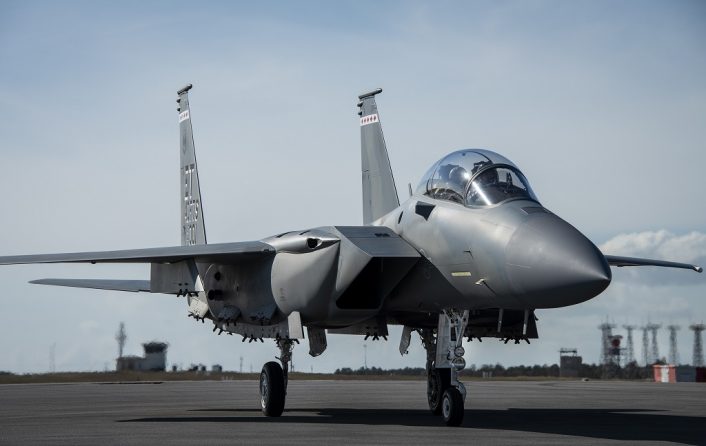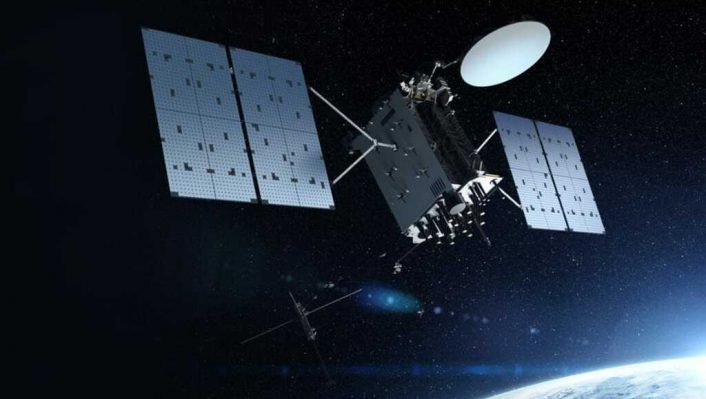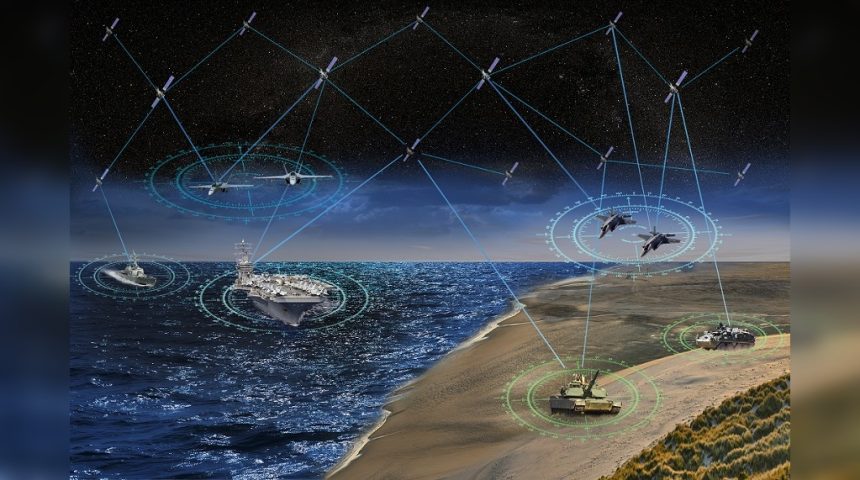Blackjack will create a cheaper, easier to upgrade and less vulnerable autonomous satellite network for military communications, navigation and possibly early warning.
The Defense Advanced Research Projects Agency (DARPA) has awarded Northrop Grumman a 13.3 million USD contract for the Phase 2 of the Blackjack program that will allow the company to “advance its Position, Navigation, and Timing (PNT) payload through emulation and Critical Design Review, and build PNT payload units destined for space flight”, as mentioned in the contract award notification.
The program’s goal is to help military aircraft navigate in GPS-degraded and GPS-denied environments. These kinds of environments are becoming a concrete possibility in future battlefields, with some examples of GPS jamming tactics already seen at work in conflict areas like Ukraine and Syria. Because of that, complex exercises featuring GPS jamming are becoming more common in the recent years in the United States and also in other NATO countries.
GPS jamming doesn’t require complex equipment, as small commercial off-the-shelf equipment, available also to the public, can be used to jam GPS reception in only a few seconds by emitting radio frequency interference signals or signal noise that can completely disrupt or degrade the reception of the GPS signal from the satellite constellation, depending on how strong is the signal used or which frequencies are being affected by the interference.
Even the latest addition the U.S. Air Force inventory, the F-15EX Eagle II, is being tested in a complex jamming environment during exercise Northern Edge 21, which saw the first two aircraft delivered to the service deploy to Alaska. “At Northern Edge we’re assessing how the F-15EX can perform in a jamming environment, to include GPS, radar and Link 16 jamming,” said Maj. Aaron Eshkenazi, F-15EX pilot in the 85th Test and Evaluation Squadron. “The other main goal is assessing the EX’s interoperability with fourth and fifth-generation assets. With more than 60 aircraft airborne during every vul (vulnerability period – the period of time when an aircraft is vulnerable to harm) at Northern Edge, we’re putting the jet in the role it will perform in once it’s fielded, and seeing how it does. So far, it’s been performing really well.”

One of the reasons for the military to train in these conditions is explained by DARPA: “National Security Space (NSS) assets, critical to U.S. warfighting capabilities, traditionally reside in geosynchronous orbit to deliver persistent overhead access to any point on the globe. In the increasingly contested space environment, these exquisite, costly, and monolithic systems have become vulnerable targets that would take years to replace if degraded or destroyed.”
The geosynchronous orbit is one of most used orbits with an orbital period of one sidereal day (23 hours, 56 minutes and 4 seconds) that matches Earth’s rotation on its axis. This means that, for an observer on Earth’s surface, an object in geosynchronous orbit returns to exactly the same position in the sky after a period of one sidereal day. This kind of predictability, together with the fact that these orbits are well known, is one of the reasons why satellites in geosynchronous orbits are becoming more vulnerable as the space domain gets more involved in military operations.
An even more vulnerable geosynchronous orbit is the geostationary orbit, which is a circular geosynchronous orbit in Earth’s equatorial plane. Contrary to a “simple” geosynchronous orbit, which can assume different shapes and inclinations, this orbit is always circular, with no inclination in relation to the equator and a constant altitude of 35,786 km (22,236 mi).
DARPA’s Blackjack program aims to develop and demonstrate the critical elements for a global high-speed network in low Earth orbit (LEO) that would provide the U.S. Department of Defense with highly connected, resilient, and persistent coverage, replacing the more vulnerable satellites currently in the geosynchronous orbits. Contrary to the geosynchronous orbit, a LEO has an orbital period of just 128 minutes or less, making at least 11.25 orbits per day, and is situated below an altitude of 2,000 km (1,200 mi), which is approximately one-third of the radius of Earth.
The new system will be independent from existing satellite navigation systems, as mentioned by Dr. Nicholas Paraskevopoulos, chief technology officer and sector vice president for emerging capabilities development at Northrop Grumman: “Northrop Grumman’s software-defined Positioning, Navigation and Timing (PNT) technology will offer military users an agile new signal from low Earth orbit (LEO) that is not dependent on existing satellite navigation systems. Warfighters depend on assured PNT not only for traditional missions like force projection and joint operations, but also for emerging autonomous and distributed missions. We are demonstrating what’s possible from a highly connected, resilient and persistent LEO constellation.”
The Blackjack program was launched in 2017 and seeks to incorporate commercial sector advances in LEO, including design of LEO constellations intended for broadband internet service (like SpaceX’s Starlink), to reduce the costs and time needed to obtain an operational satellite. As mentioned on DARPA’s website, the agency “is interested in capitalizing on these advances to demonstrate military utility, emphasizing a commoditized bus and low-cost interchangeable payloads with short design cycles and frequent technology upgrades.”

The key program objectives highlighted by DARPA are:
- Develop payload and mission-level autonomy software and demonstrate autonomous orbital operations including on-orbit distributed decision processors.
- Develop and implement advanced commercial manufacturing for military payloads and the spacecraft bus.
- Demonstrate payloads in LEO to augment NSS assets. The driver will be to show LEO performance that is on par with current systems in geosynchronous orbit with the spacecraft combined bus, payload(s), and launch costs under $6 million per orbital node while the payloads meet size, weight, and power constraints of the commercial bus.
DARPA planned to award contracts over three phases to up to eight commercial satellite buses or military sensors and payloads suppliers. The satellite buses are required to be either from existing or in-development production lines as long as they can “accommodate a wide range of military payload types without redesign or retooling of the production line for each payload.”
Currently available info shows Lockheed Martin as the satellite integrator for Blackjack, confirmed both in Phase 1 and Phase 2, with Blue Canyon Technologies and Telesat providing the buses and SEAKR Engineering developing a data processing system for the satellites to operate autonomously. The entire Blackjack LEO constellation will have as many as 20 satellites and will include technology shared with the Pentagon’s Space Development Agency for a large LEO network of communications and missile-warning satellites.
In addition to Northrop Grumman’s PNT payload, Raytheon will provide Overhead Persistent Infrared (OPIR) payloads that will add space-based early warning sensors to the Blackjack constellation. It is not known if the two payloads will be divided in the constellation or collocated on the same satellite, as it has only been said that “spacecraft will carry a military payload and two optical inter-satellite links”, without adding other details.
According to Julie Pecson, Lockheed Martin’s Blackjack program director, the first four spacecraft are scheduled to launch in June 2022. Initially it was reported that DARPA’s intent is to keep the program unclassified, so it is possible that other details will be disclosed as the launch date gets closer.









